“Our dead are never dead to us, until we have forgotten them.” George Eliot, English novelist
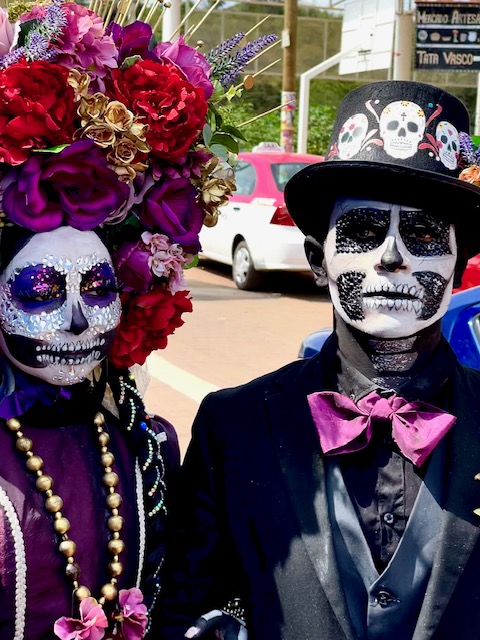
Worth repeating and revisiting … a year ago we had the privilege of experiencing and immersing ourselves into Mexico’s Dia de los Muertos in all its glory, traditions and celebrations of loved ones who’ve departed one world for another. This year, as inspired by all the wonderful altars and ofrendas we saw, created to honor the dead, we, too put up our first altar and would like to share it with you as a tribute to all our loved ones. Muchas gracias.

At long last, we’ve hit the road again in México. And what better way to start than with a Bucket List entry: Día de Los Muertos. It’s Mexico’s time to honor and celebrate lives lost. We were fortunate to participate in the epicenter of it all – Pátzcuaro and the indigenous Purépecha towns surrounding the Lake Pátzcuaro region of Michoacán.
The film, “Coco,” brought to the American conscious some idea of the cultural significance, traditions, and concepts of Día de Los Muertos. But until you actually experience it firsthand in the indigenous islands and pueblos of Lake Pátzcuaro, all else seems arbitrary. This trip exposed me to a whole new way of thinking about life and death.
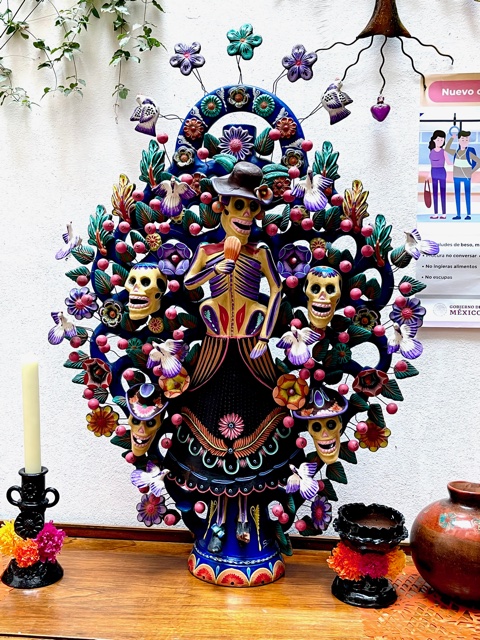
A two-hour detour began the adventure in the small, mountainous “Town of Eternal Christmas,” Tlalpujahua, a Mexican “Pueblo Mágico.” I’ve written about it in last year’s Monarch Butterfly and Morelia visit (Jan. ‘20), but being a Christmastime aficionado (OK, addict), this visit demanded a longer time frame to satisfy and feed my addiction. Plus, our timing couldn’t have been better since there’s a big Holiday Feria going on now ~ in other words, I’ve hit the motherload of all things Christmas. Hallelujah ~ Amen!
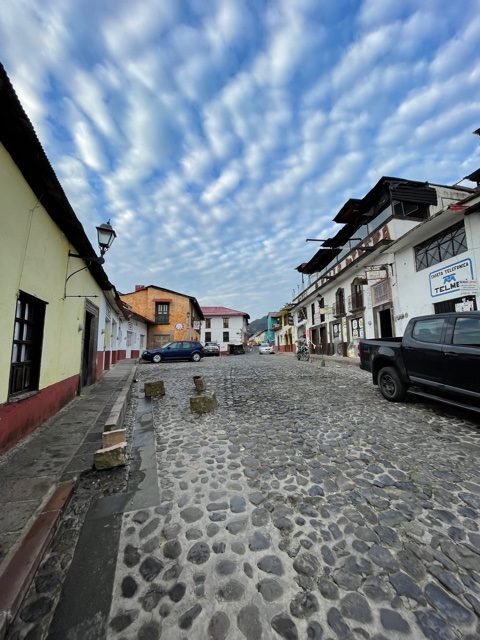
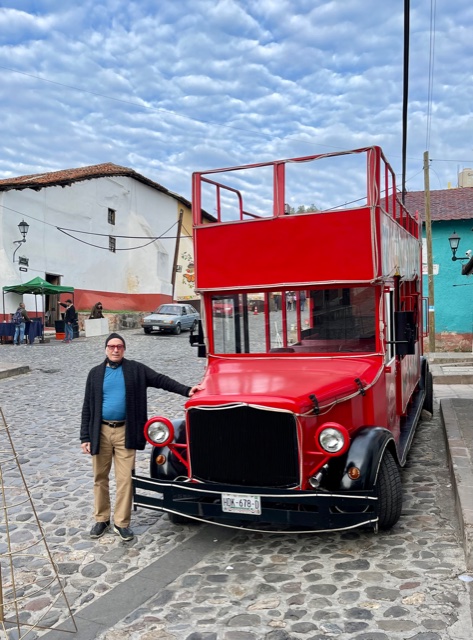

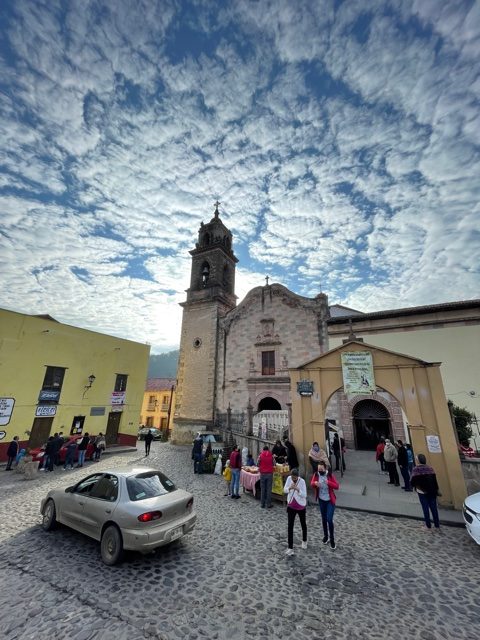
In all my dreams I couldn’t conjure up a truer image of what a Christmas Town should look like, but this Magic Town comes mighty close. So, take that, Disney! Meandering from shop to shop, one had to maintain restraint and be very selective with all the unique, handmade treasures the town’s famous for.
Gorgeous, handblown, and painted glass spheres are its specialty, as are well-crafted artificial trees, and boy, did we buy ‘em all! Blessed is our SUV, filling it to the hilt with our haul of festive decorations; doing our share in contributing to the town’s GNP. Or as David likes to say of me, “The drunken sailor’s back in town!”
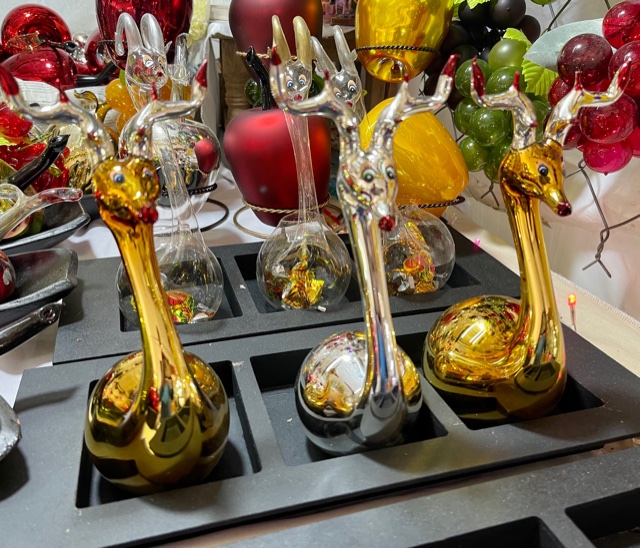

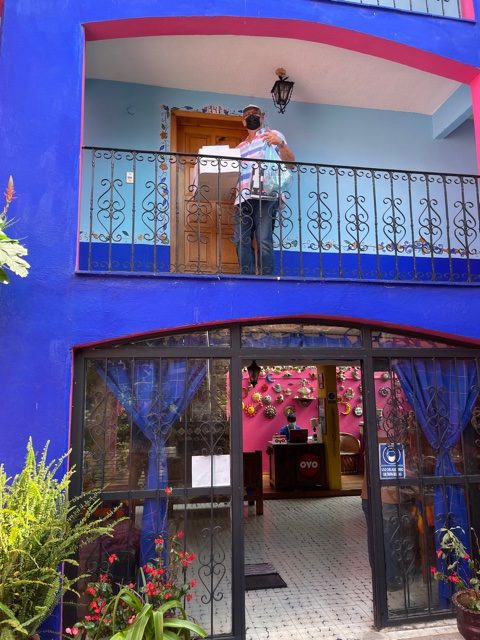

Tlalpujahua has a fascinating history. It’s now a happy, prosperous town, but tragedy struck this former gold and silver mining town in the early morning hours of May of 1937. A horrible disaster occurred when, after a week of sustained heavy rainfall, a voluminous flood and avalanche of mud let loose. The toxic wastewaters that were released from the mine destroyed everything in its long path down the mountainside; burying everything under 100 feet of mud.


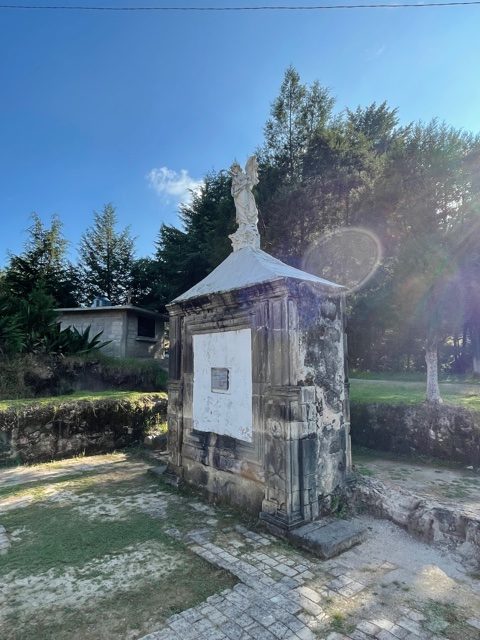
It caused the deaths of perhaps hundreds or thousands of townspeople (total unknown), and destroyed Our Lady of Carmen Church. The only thing remaining of the town was the church’s bell tower. The chapel site is left for visitors to remember its lost souls. An introduction, of sorts, for our upcoming Día de Los Muertos tour.
There was a second must stop on our agenda ~ Las Carnitas de Quiroga. During our first visit last year, we were already bursting at the seams from a huge breakfast, but still managed to chow down on the famous Carnitas Carmelo. See Netflix’s “Taco Chronicles” for its feature on them. Pati Jinich, the Mexican chef, too does her famous, “Mmmm…mmm!” tasting at their street cart on her PBS tv show.
Strolling around the Quiroga plaza, vendors tempt you with their luscious, succulent bites of pork wrapped in warm tortillas. One can easily get their fill, Costco-style, by going from stand to stand. In prepping this time, we skipped breakfast and came prepared to stuff ourselves silly.
We immediately made a beeline to Carmelo’s; plopping ourselves down at a communal table with our overstuffed tacos and the National Drink of Mexico: Coca-Cola. A family sat down next to us and graciously shared a 2-kilo serving of carnitas piled sky-high on butcher paper (that’s almost 4 ½ lbs., folks!). They kindly offered us some limes, avocados and napkins. La comida hace amigos. Food makes friends and “Viva la vida” ~ “Long live life.”
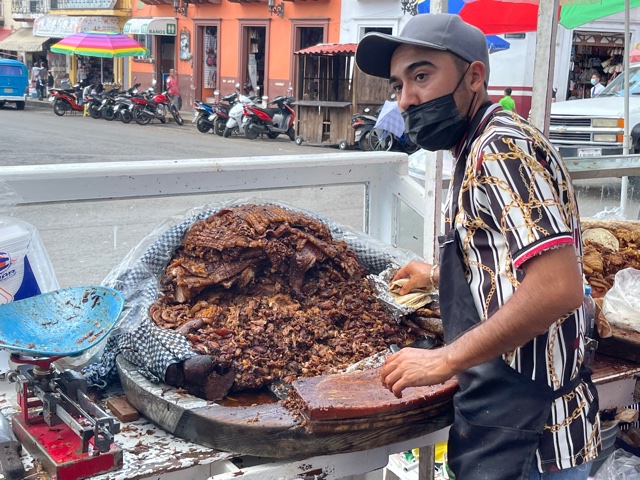
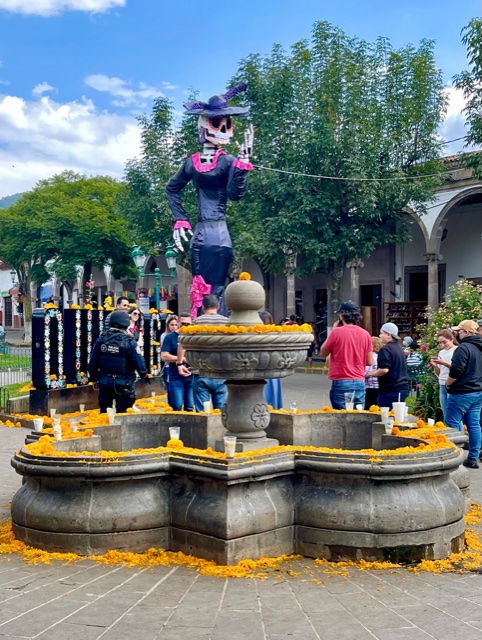
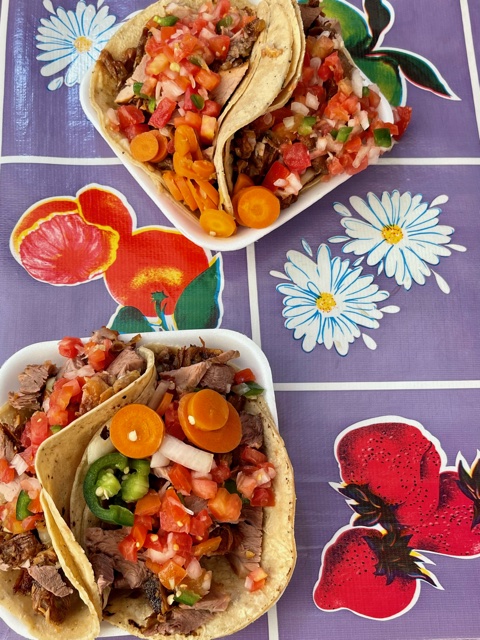
And now, let the tour begin! All Saints’ Day, the 31st of October. This day too is aka “Día de Los Inocentes” in Mexico and commemorates children who have died.
We were fortunate to be guided by Jaime Balderas, whose Purépecha heritage enabled us to immerse ourselves in local customs and traditions, seeing and experiencing things that not many are privileged to witness and be a part of. Daytime travels brought us to artisanal Pueblos Mágicos: Capula, Tzintzuntzan, and Santa Clara del Cobre; featuring wonderful Catrinas, dinner pottery, water reed objects, ceramics, and all things copper (cobre).
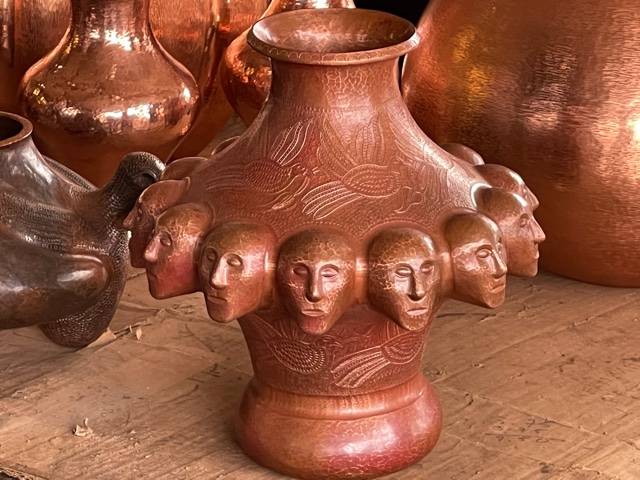
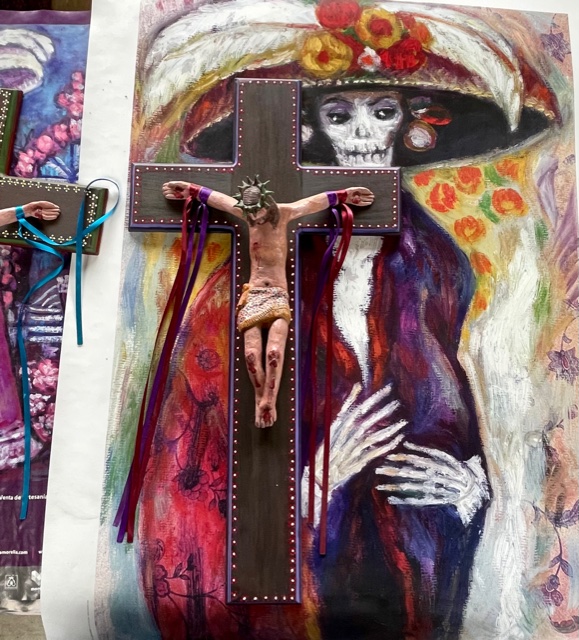
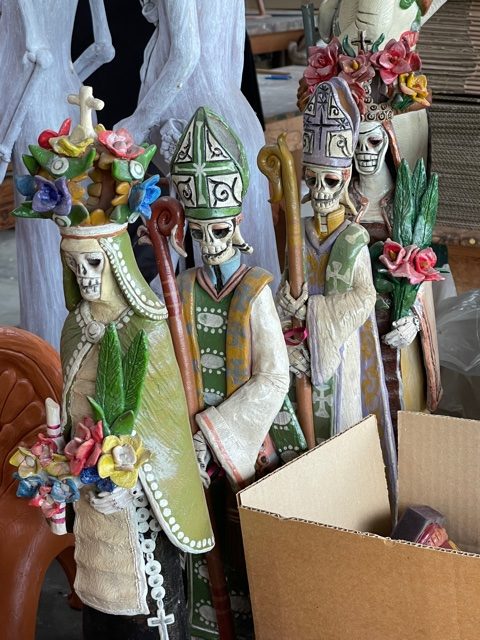
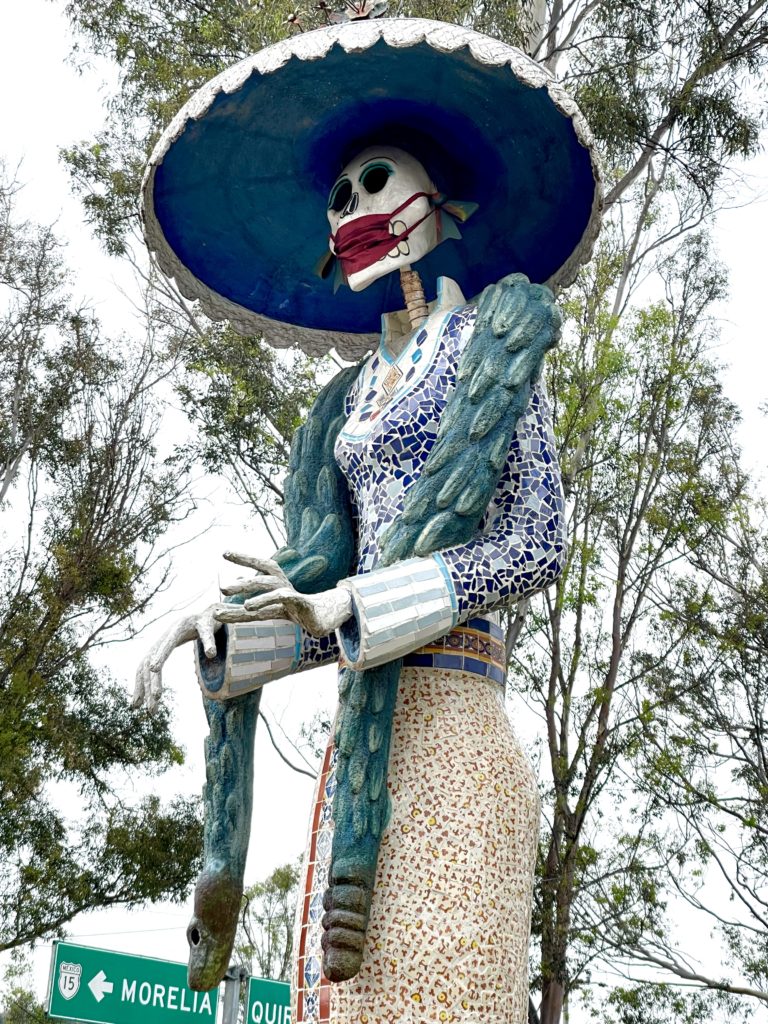
Nighttime was another world entirely. Our first evening’s foray into Los Muertos was to the village of Cuanajo. Here was a unique and totally different celebration found nowhere else that used wooden horses adorned with foodstuff and natural coverings as an ofrenda (offering) to family altars.
At the center of Cuanajo’s main plaza is a gigantic, fully decorated, wood stallion that reminded me of the Greek mythological Trojan Horse. Kids climbed the inside stairs to have their photos taken by adoring parents below. Vendors on the square sold us two, small equines. With that, our group eagerly got busy decorating them with all sorts of flowers, sugar cane, bananas, oranges, mandarin and other fruits; each one to be presented to a family in town as our tribute to their altar.

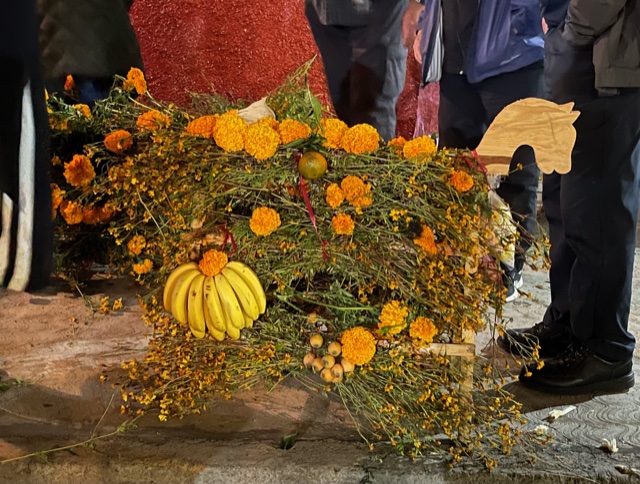
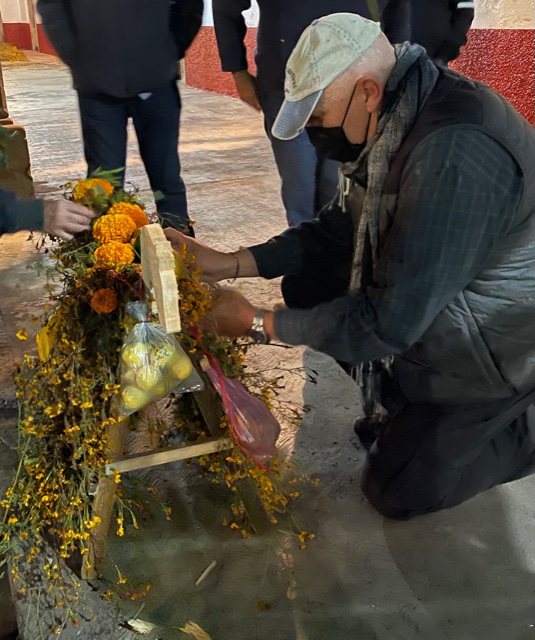
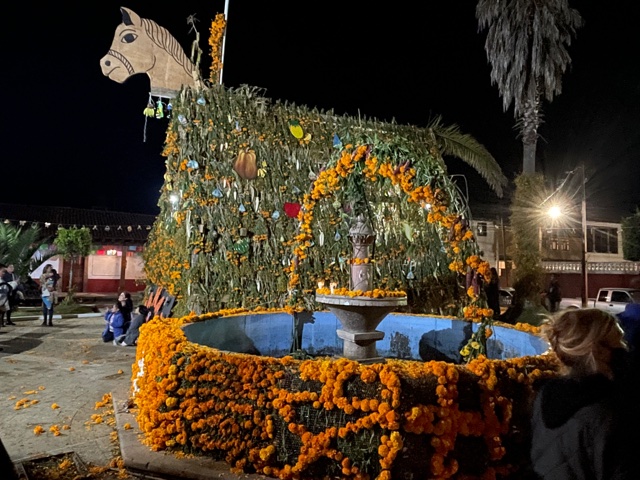
I felt very privileged and honored to lead our procession along with another fellow traveler, Terry. We slowly and carefully walked the cobblestoned streets to the ofrenda of the first family.
There, we were warmly welcomed with open hearts, and once our horsey was in place, out came the tamales and atole (a traditional hot corn and masa-based beverage); tequila and mezcal were generously poured and appreciated on this chilly night. Overall, it was a somewhat solemn affair, in contrast to …
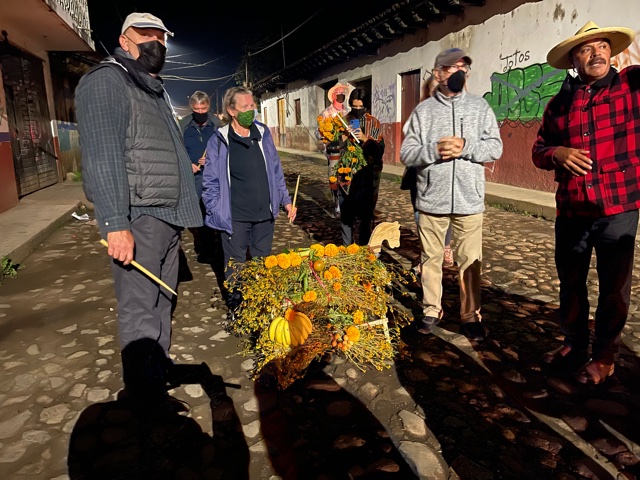
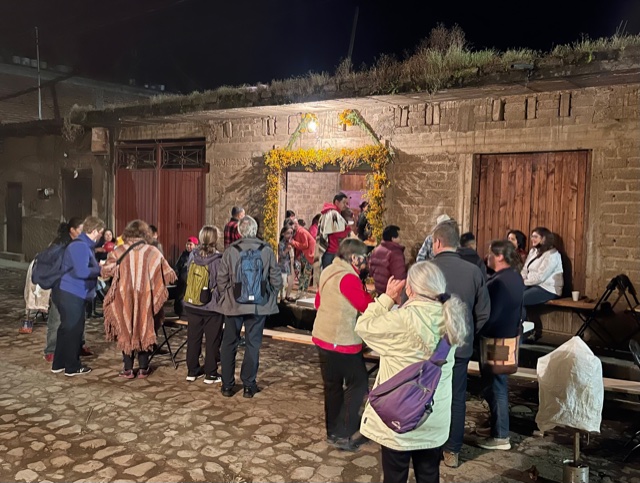
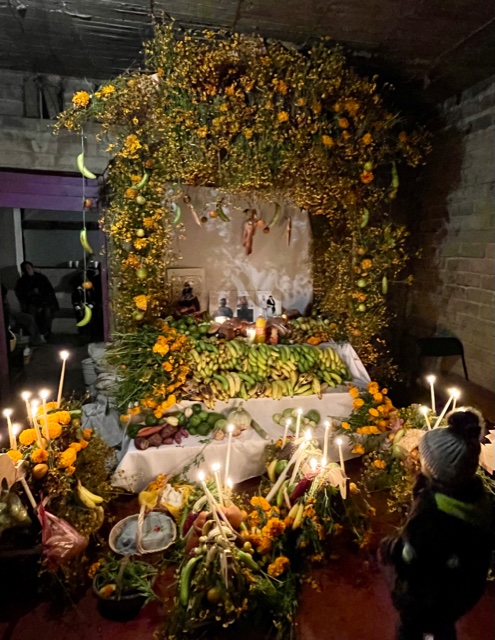
… the second ofrenda on the opposite side of town. As we proceeded, you could hear the festive party before seeing it by the flashing lights, and deafeningly loud and out-of-sync Banda playing; enough to wake the dead (!). Nonetheless, a good time was being had with food and drinks flowing. We were truly honored to be part of a very localized, indigenous tradition. The kindness and open-heartedness given to us made for a truly memorable and remarkable experience.
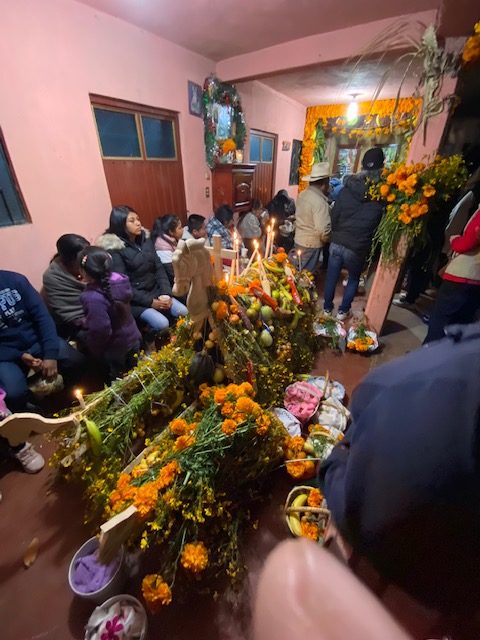


The Pueblo Mágico, Tzintzuntzan, took its own turn away from the previous night’s activities. During our afternoon stay here, families paraded down its main drag, many with local Mariachi bands in tow, serenading their loved ones en route to the cemetery. This, all while proudly and emotionally displaying their altars to be placed upon highly elaborate tombstones.
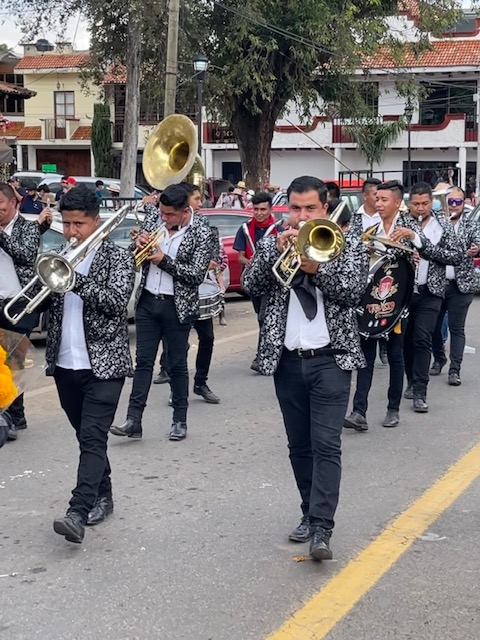
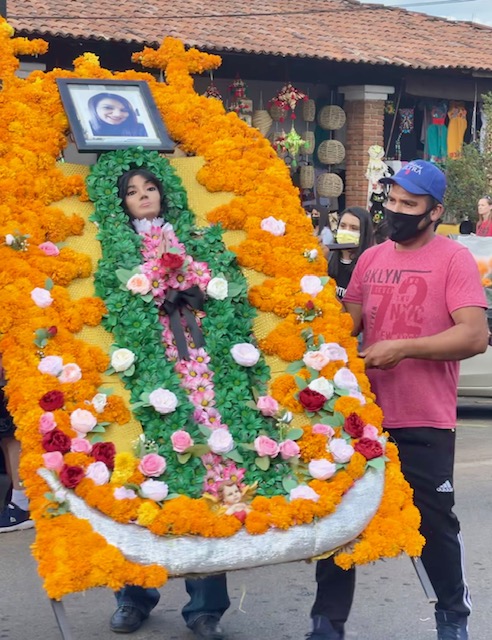
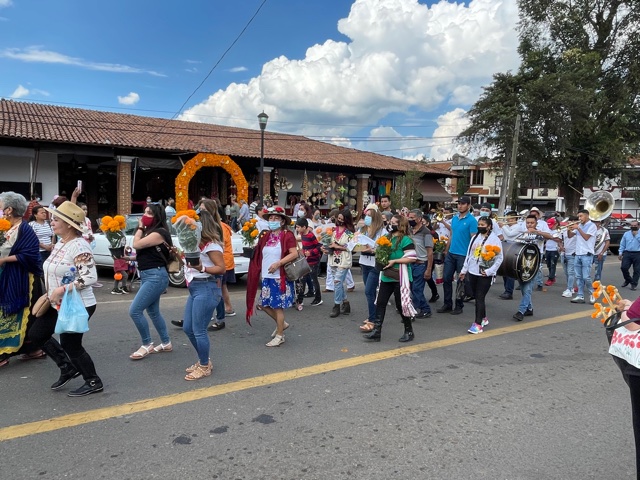
It felt like Carnival. The atmosphere of music, bright displays of marigolds, and people dancing, but with respect and reverence for Los Muertos always being honored. The cemetery was enveloped in marigolds and flickering candles. No words can express the beauty, peacefulness, and love that surrounds you. Pictures don’t do it justice either. Our guide, Jaime, impressed us from the beginning that Día de Los Muertos is all about LIFE – not death. We most certainly felt it.

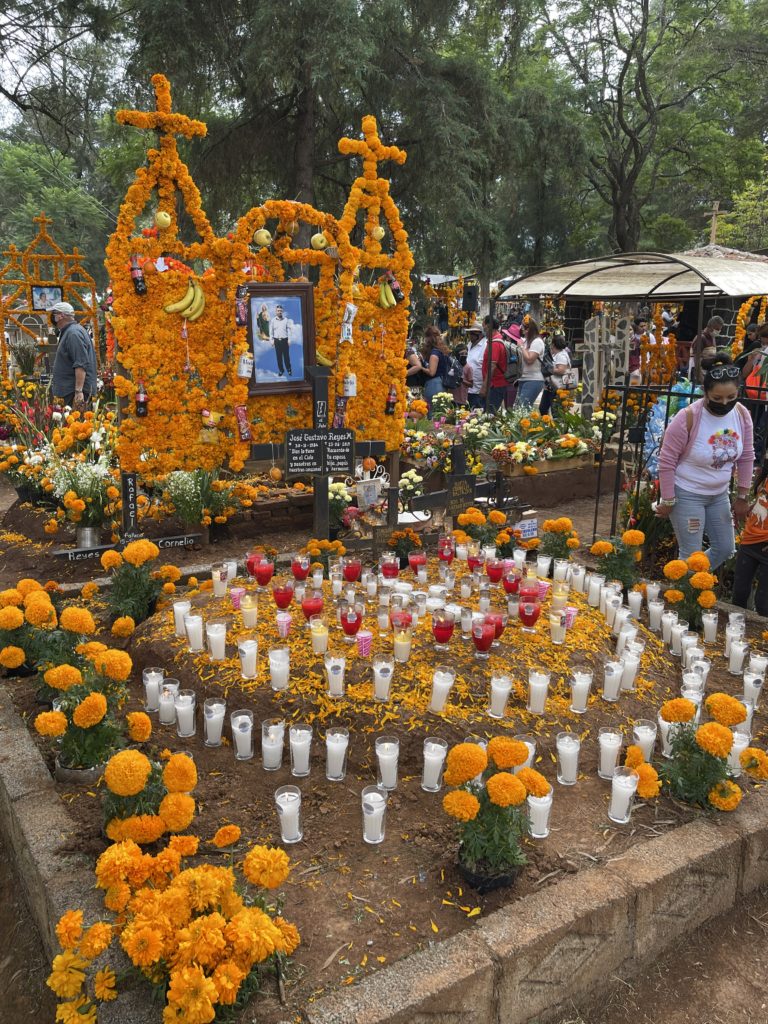
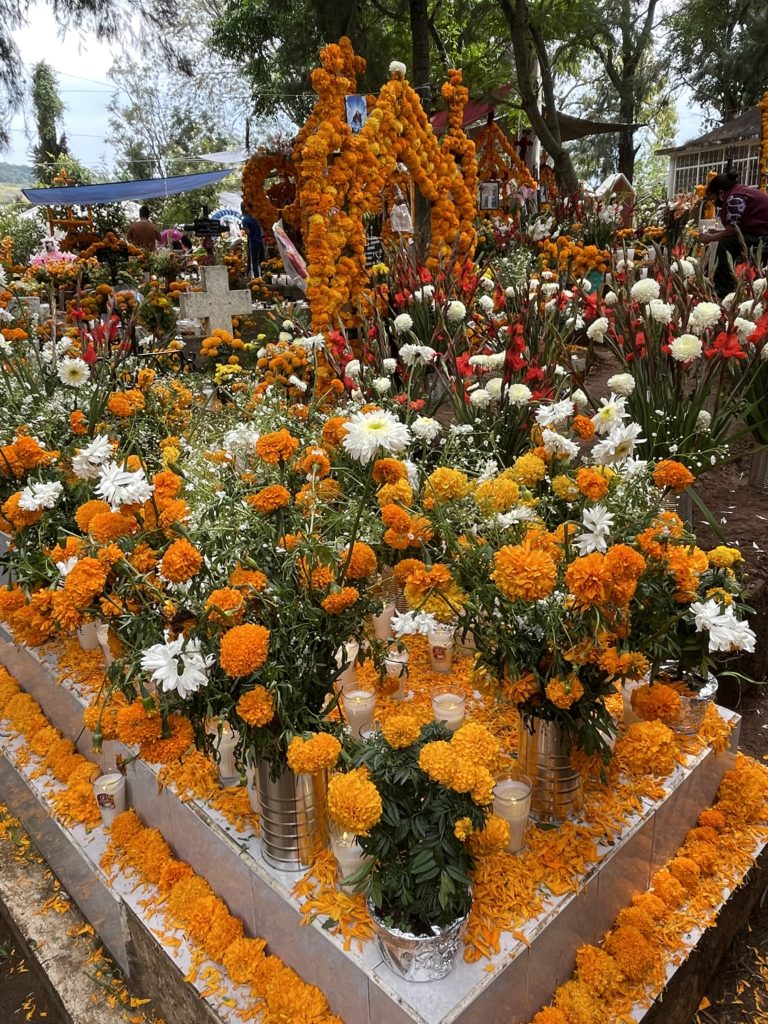
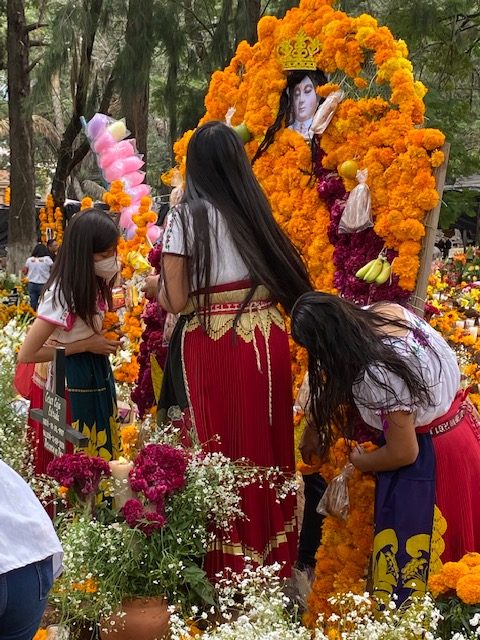

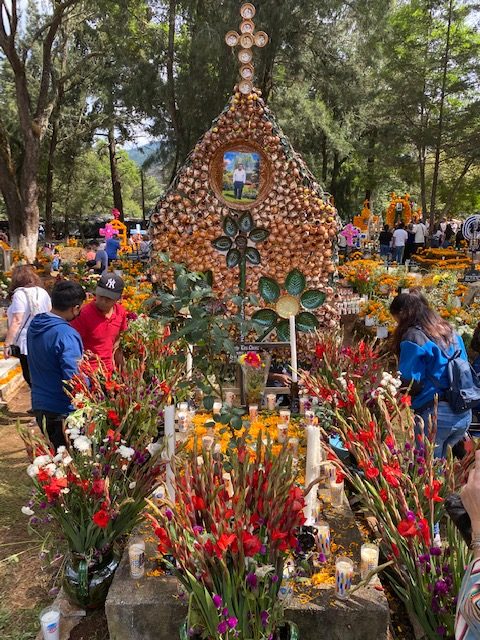
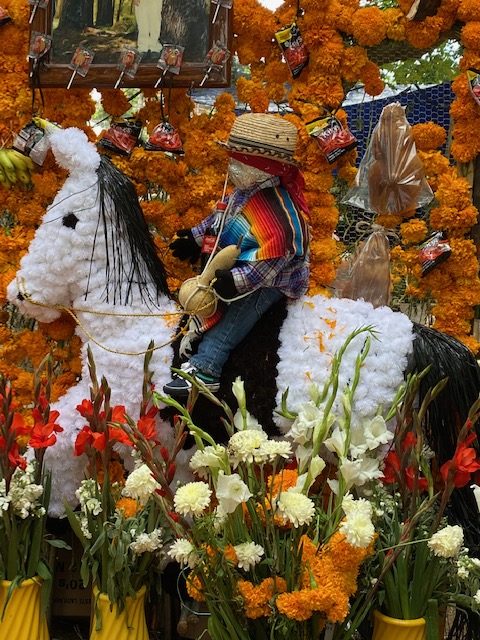
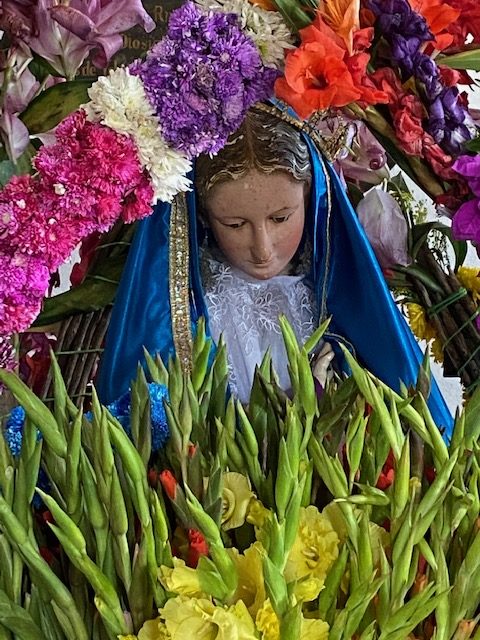
The evening’s dinner provided us with another honorific – a meal prepared for us at the local home of a Purépecha family of cooks. Oh, the food, glorious food! Outstanding pozole and chicken mole were served. Simply prepared with simple ingredients; long, slow cooking in large pots over open fires. You can’t get better than that. We had great meals on this trip, but this won hands-down. I wish I’d been a cow so I could have multiple stomachs!
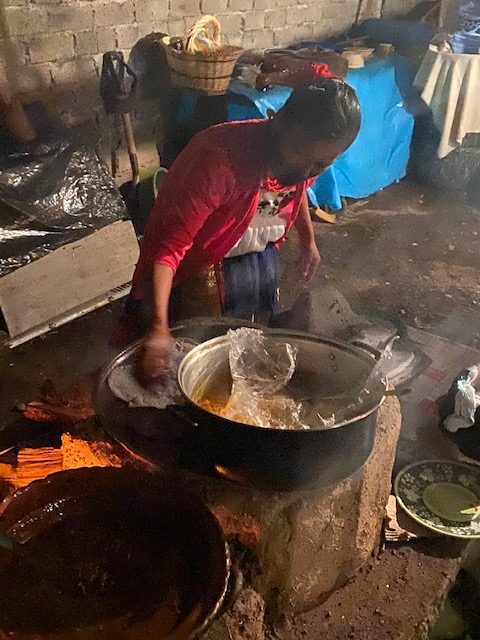
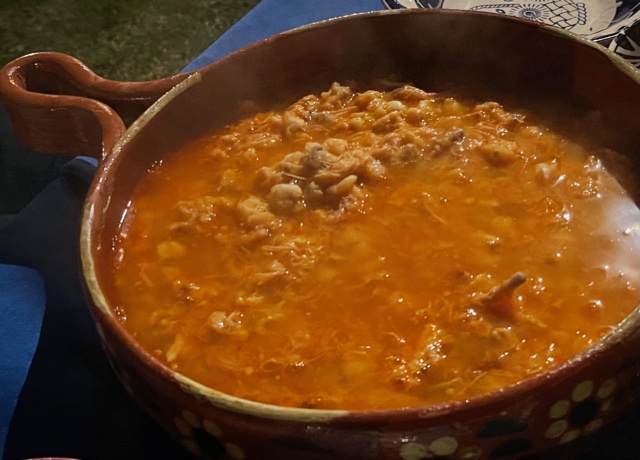
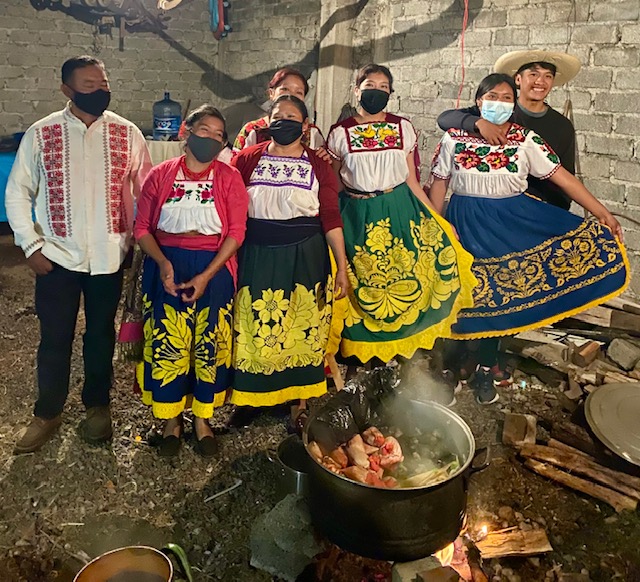

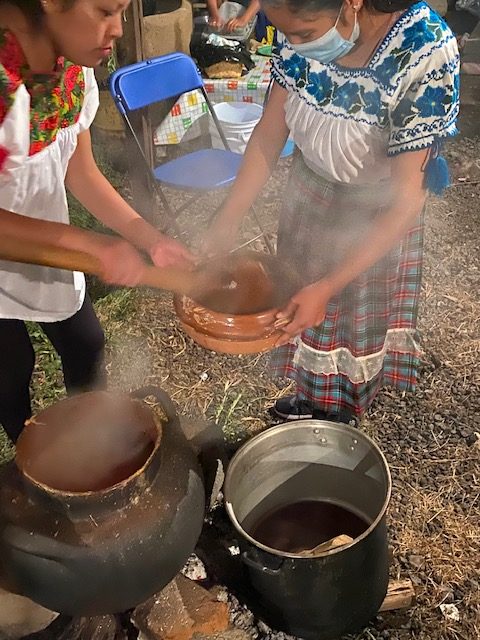
A special and exclusive boat ride followed dinner to several, small islands in Lake Pátzcuaro. Jaime’s Purépecha heritage gave us access to where others can’t land, and thankfully, aren’t on the main tourist paths. Hence, promises were made to not divulge their names, in safeguarding their remoteness.
The first islanders welcomed and surprised us with an amazing boat flotilla of fishermen with their butterfly-shaped fishing nets. Each was aglow ~ lit by a charcoal fire pot that illuminated their bow. They performed an awesome, beautiful, and graceful “Dance of the Boats.”
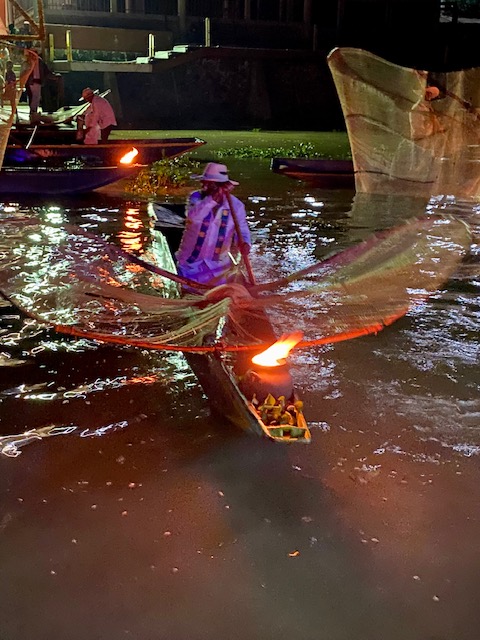

We came ashore and climbed up from the docks to the main plaza that also serves as a soccer and basketball court. There our group was treated to traditional Purépecha music, with just three basic instruments, led by the town’s elder, filling the air with sounds of joy and happiness. They were joined by a children’s dance group performing a “Catching of the Fish,” themed routine; charming us with their passion. As always, per usual, at the end of the dance I got chosen from the crowd to dance with one of the beautiful, costumed young ladies.
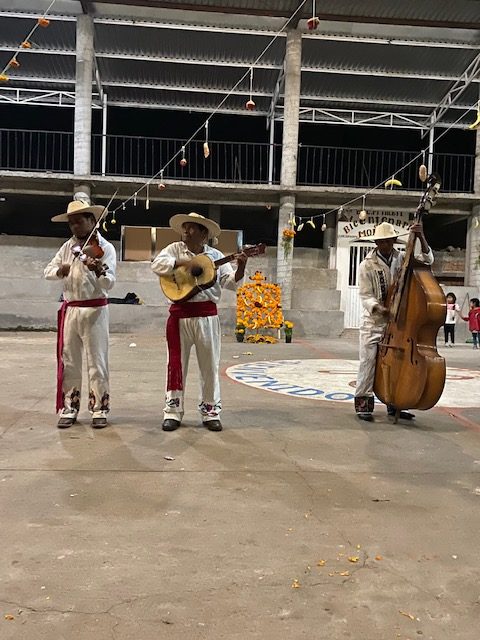
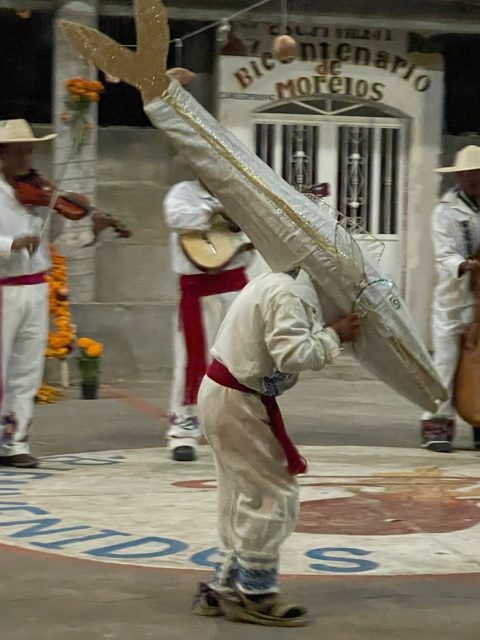
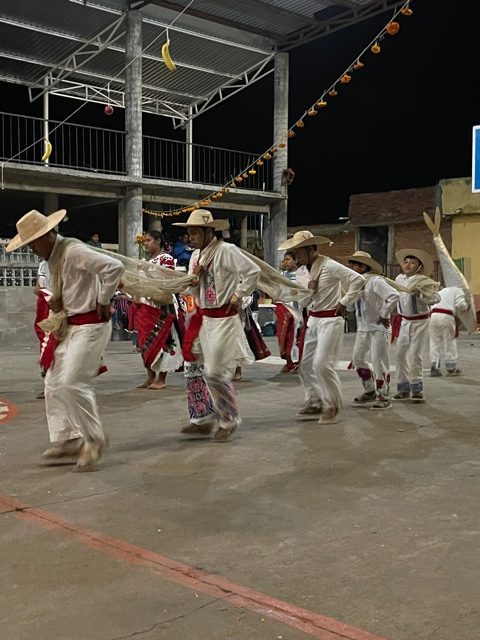

Afterward, we were all invited to visit the small island’s cemetery, where generations of families were quietly sitting, speaking, eating, and telling stories of departed loved ones. Kids were wrapped in blankets and slumbering the night away. This devout vigil goes on ‘til 7am!
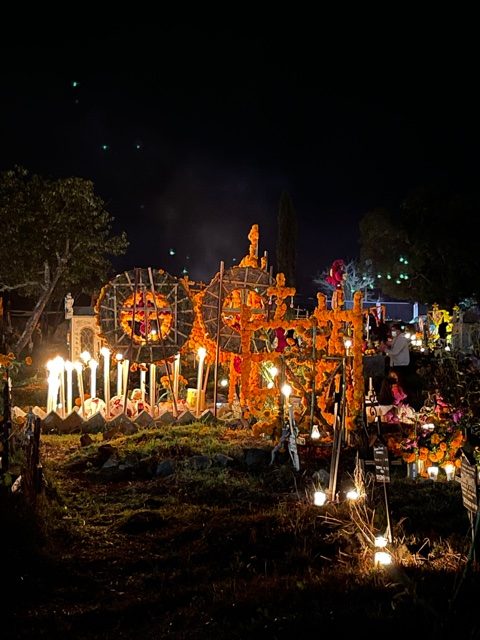
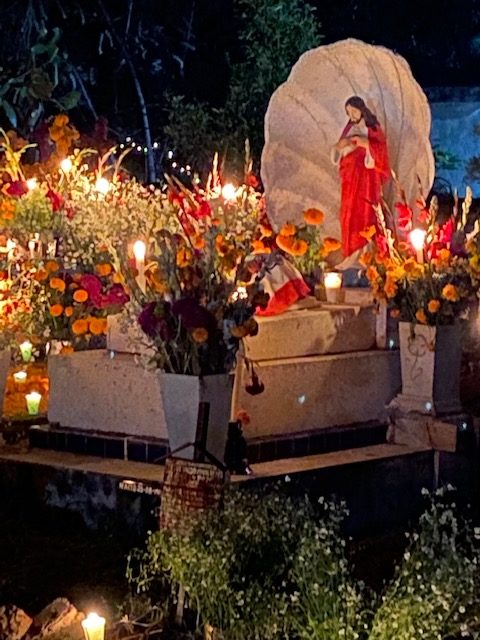
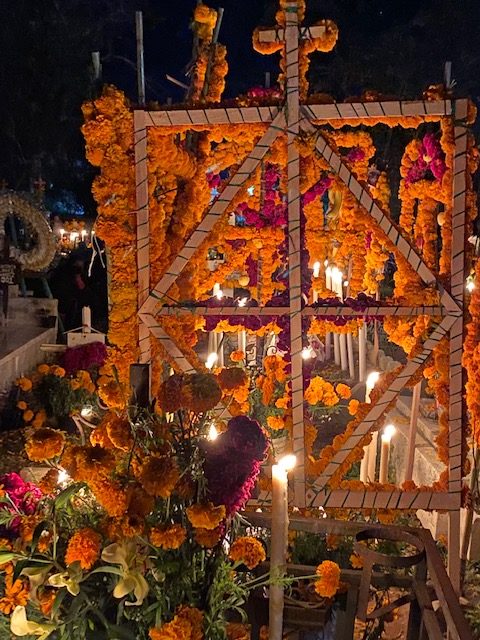
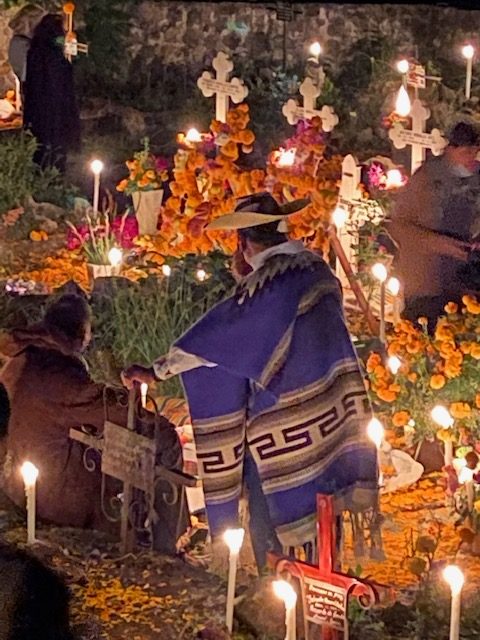

Two other islands were also on our late-night itinerary; they being a bit different, but both cemeteries there, too were filled with bright orange marigolds and countless flickering candles dancing the night away. We dragged ourselves back to our hotel and into bed by 4am.
The entire Día de Los Muertos experience required you to be present and no matter how much I try, it just cannot be described with any justice. There were many WOW! moments. Two photographs sum up for me the genuine nature of the holiday … a solitary man dutifully sitting in deep thought and contemplation by the grave of a loved one; the other an elder woman at a gravesite, wrapped in her colorful blanket, surrounded by all the accouterments of the holiday.
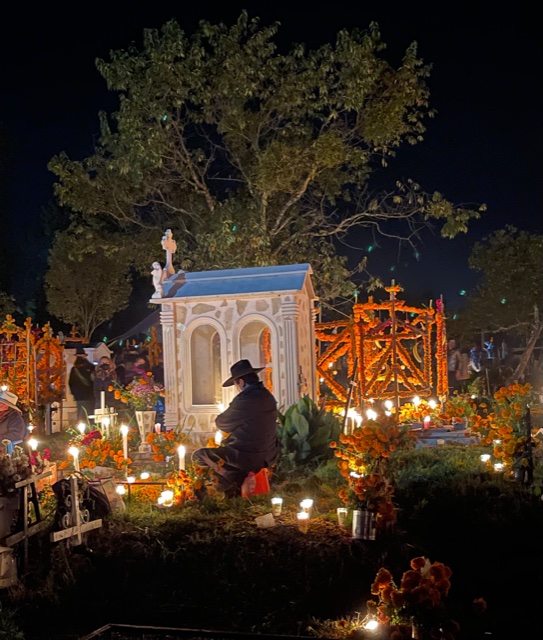
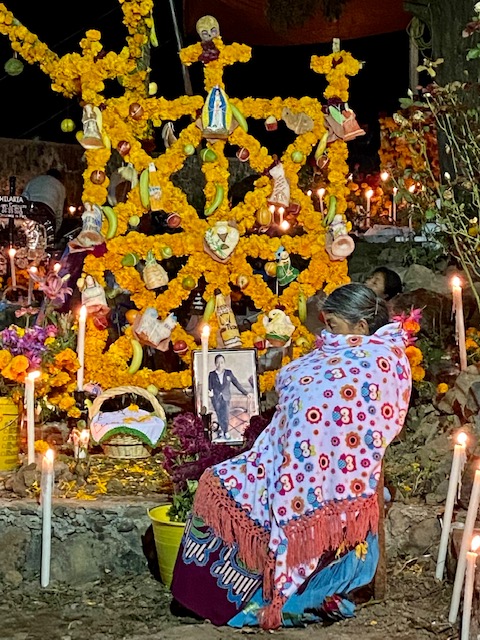
The following paragraph was taken from an article by Clarita Mannion. My feelings are exactly the same.
LET ME DIE LIKE A MEXICAN
And so, while I have endless wishes for my life, I now have only one for my death: let me die like a Mexican. When I’m gone – with any luck many years from now – let me be remembered as Mexicans are.
Let bright orange blossoms, the gentle glow of candles and the smell of my favorite foods guide me home. Let me be brought back to life once a year through the love and laughter of those who knew me. Let my memory bring joy to anyone I leave behind.
If that’s not life after death, I don’t know what is.
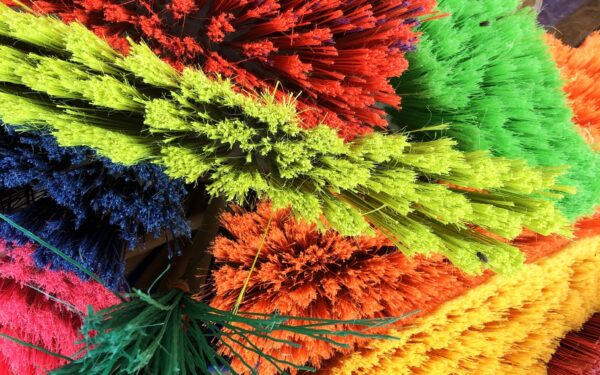

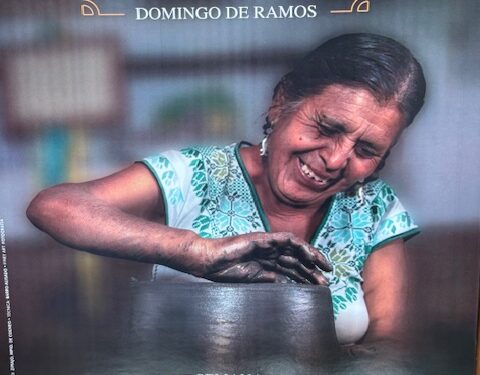

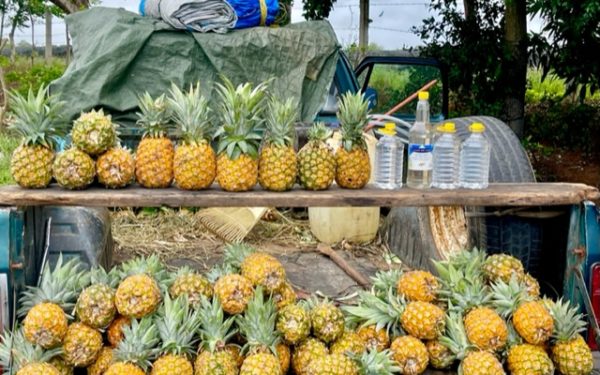
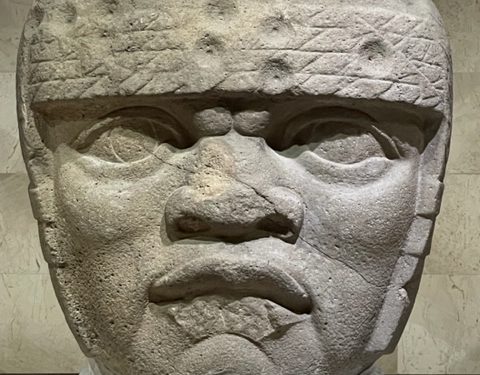
One of your very best Musings. Truly heartfelt. The photo of the lone gentleman in the cemetery is especially poignant. Thank you for sharing your Día De Los Muertos experience again this year.
so worth the trip down memory lane! loved these pics then- love them now-
thank you-
E
Every time I watch Coco with my son, I make a wish to be able to take him to the origin of it all. Thanks so much for reminding me that it’s a trip worth taking.
Emerson once said “a mind once stretched by a new idea, never returns to its original diminutions,” and you my friend stretch my mind. I love your pictures, your great sayings and your musings. I miss you both & love you.
Of course after reading your travels I am wishing I had that menu of delicious dishes to chose from. Thanks again for a great descriptive narration of your travels with Dia de lis Muertos— and yes, to die Mexican means to remain in the hearts and minds of the living.